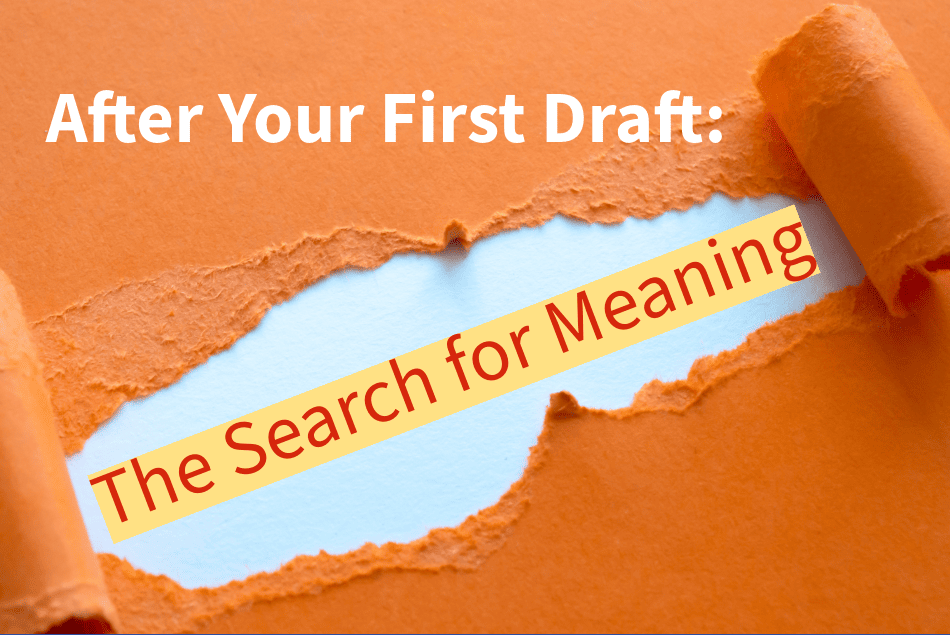by Patti Callahan Henry
First drafts are not meant for public consumption. They’re meant for editing. As writers, our first drafts tend to fall into two categories: too much or not enough, or sometimes even a combination of both in different ways. Rarely does anyone hit the perfect “enough-ness” in the first draft. Bravo to those who do.
As for plot and twists, I have tended to lean toward too-much. I get nervous that my story isn’t enough, so I add too many things that have nothing at all to do with the central narrative.
When I look back at the photos of my wedding, I see my hair is done up in a way I had never worn before and would never wear again –big and braided and hair-sprayed. My dress’s shoulderpads are big enough to double as chandeliers, and my blue eyeshadow is thick as plaster. But let’s remember – I came of age in the eighties, Dallas was on TV and the Farrah Fawcett poster was on every boy’s wall. We emulate what we see—or at least we try.
 Our Eighties philosophy was this – add more! More eyeshadow. More eyeliner. More jangly bracelets, Louder music. Bigger shoulderpads.
Our Eighties philosophy was this – add more! More eyeshadow. More eyeliner. More jangly bracelets, Louder music. Bigger shoulderpads.
For a long time, I infused my writing with that “More is best” philosophy. When I wasn’t sure where the plot was going, or if I felt lost in the soggy middle, I threw in a twist, a secret, a kitchen sink. Rarely do those extras stay in the story–they were adornment when I was covering up my confusion about the core of the story.
These days I spend more time on the story’s bones. It helps. Here are some ideas to make sure you aren’t adding blue eyeshadow and bulky shoulderpads when you should be strengthening the core of your story.
What does your character want and why?
If your character doesn’t have a desire, if they don’t want something – what are we even doing here? Story is desire and desire thwarted. Spend your time thinking and writing about this in whatever way works for you. I keep a story notebook and ask myself questions. What does the character want and what would they do to get it? How desperate are they? The answers and will help focus your work and will lead to scenes to be written.
How does your character transform?
Change is story. Who is your character at the start the story and who are they at its end? If they didn’t change, a story didn’t happen. Transformation is story. What do they realize? What do they see in themselves that needs shifting or changing? This change isn’t always for the good (think The Godfather), but change must happen. How will the events of this story alter your character?
What is your central question?
For my novel, The Secret Book of Flora Lea, the central question was, “How did this fairy tale survive if the little girl who knew it did not?” What happened to Flora Lea? The central question isn’t always one that is outright asked by anyone in the novel, but one that the writer, and hopefully the reader, asks to keep the pages turning. The question drives the plot. It leads the reader and the writer to the themes of the story, which takes it to a higher level. It is the touchstone of the story, and the guiding light when a writer is lost.
After identifying the central question of my novel, I can create scenes, add twists, or even a secret that might answer that question.
Sure, there are subplots, but that’s a subject for another day. For me, these three questions, once answered, offer me a touchstone, serving as reminders of what my story is about. If I am adding a twist or even a scene, does it touch back to my character’s transformational journey or to their desires? Does it help answer (or elude) the central question?
Of course, everything I write doesn’t make it into the final version. But writing is exploration, and sometimes writers need to add, and other times, delete. Exploration involves adding and subtracting. But these questions always help me stay the course.
After finishing a novel’s first draft, what do you think are the best next steps? Share with us on Facebook.

 Patti Callahan Henry is the New York Times bestselling author of fifteen novels, including The Secret Book of Flora Lea and Becoming Mrs. Lewis: The Improbable Love Story of Joy Davidman and C.S. Lewis and Surviving Savannah She has received numerous awards, among them the 2020 Harper Lee Distinguished Writer of the Year and the Alabama Library Association Book of the Year for 2019. She has also released an Audible Original, Wild Swan: A Story of Florence Nightingale.
Patti Callahan Henry is the New York Times bestselling author of fifteen novels, including The Secret Book of Flora Lea and Becoming Mrs. Lewis: The Improbable Love Story of Joy Davidman and C.S. Lewis and Surviving Savannah She has received numerous awards, among them the 2020 Harper Lee Distinguished Writer of the Year and the Alabama Library Association Book of the Year for 2019. She has also released an Audible Original, Wild Swan: A Story of Florence Nightingale.
Patti is the co-host and co-creator of the popular weekly “Friends and Fiction” Facebook Live Show and podcast, featuring the five bestselling authors Mary Kay Andrews, Kristy Woodson Harvey, Kristin Harmel, and Mary Alice Monroe with endless stories and special guests. It is every Wednesday night at 7 PM on the Friends and Fiction Facebook page, and can be rewatched on You Tube.





